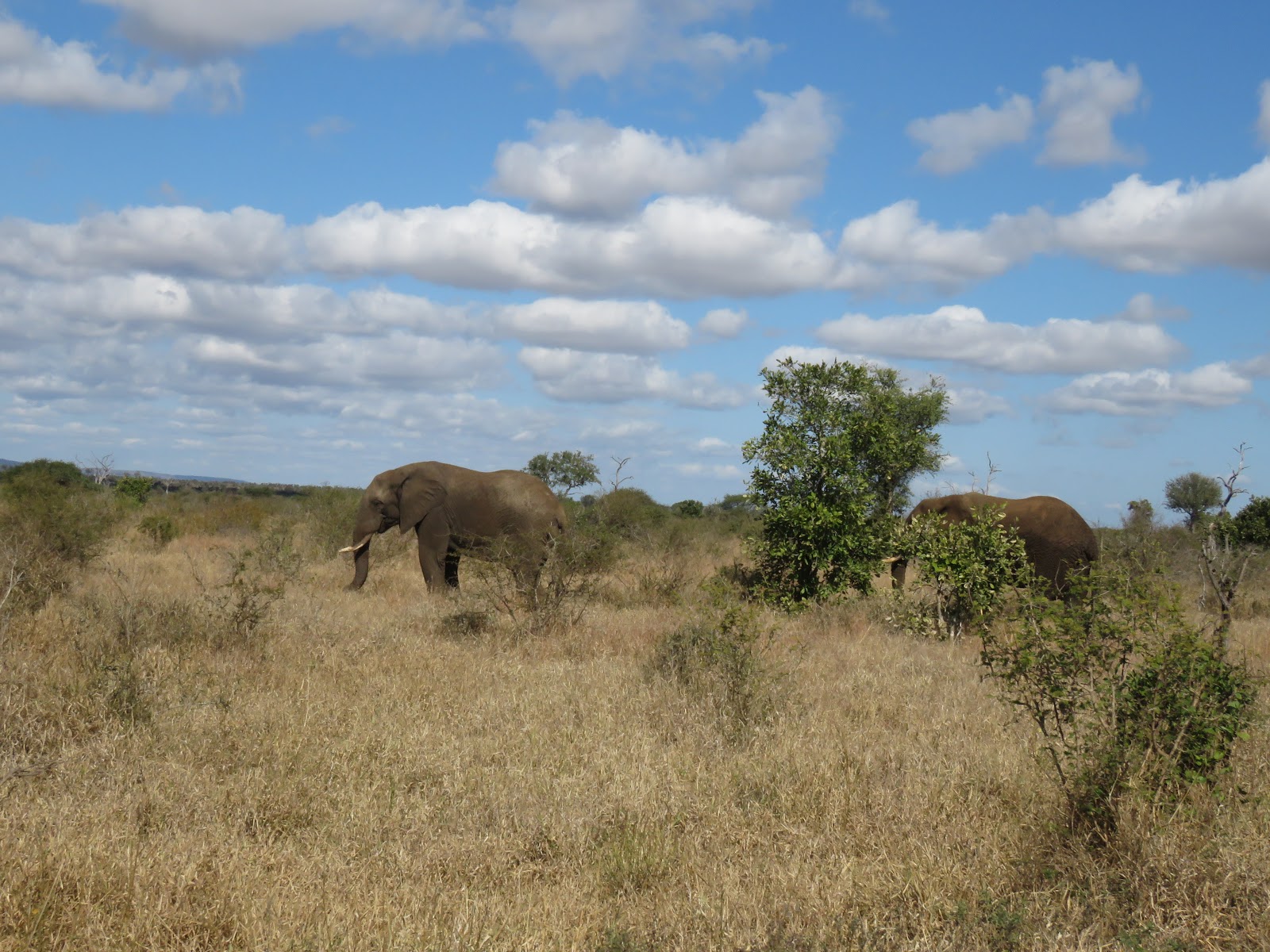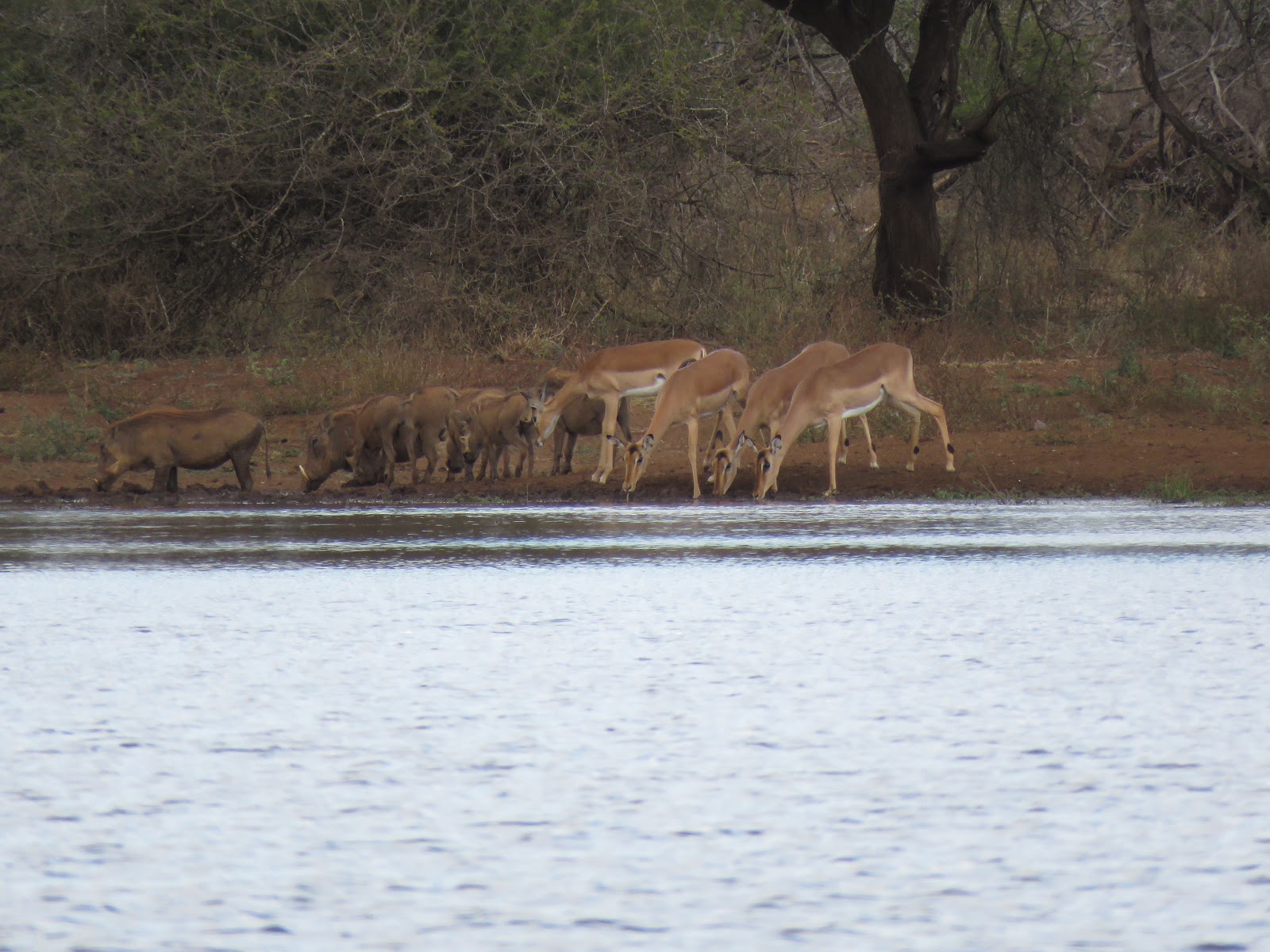 |
| We took this photo on Volstruis Street. The word volstruis means ostrich in Afrikaans. |
“Sighting of the Day in the Bush”
 |
| Wildebeest Willie and a friend, along with some warthogs at night. |
Today, as late as it is, we’re rushing through the post to get it uploaded before 1700 hours (5:00 pm) when the evening’s festivities begin. As a result, there’s no rhyme or reason to today’s photos which include a bit of this and that.
 |
| Not only do they gravitate toward the river for food but also for water, where they drink, play, and swim. |
We just returned from Kruger National Park for another fantastic day we’ll be sharing in tomorrow’s post, for which we’ll have plenty of time to prepare as opposed to today’s limited time frame.
 |
| Trying out a few of the camera techniques I learned from friend Ken, I still see that I have a long way to go. |
Over this past almost six months in South Africa, we’ve become more and more interested in visiting Kruger, but it seems to make sense to arrive before noon resulting in our frequent late posting.
If visitors arrive after midnight, it’s required to go into the building to access the park. This may result in a 30 minute or longer wait during busy days.
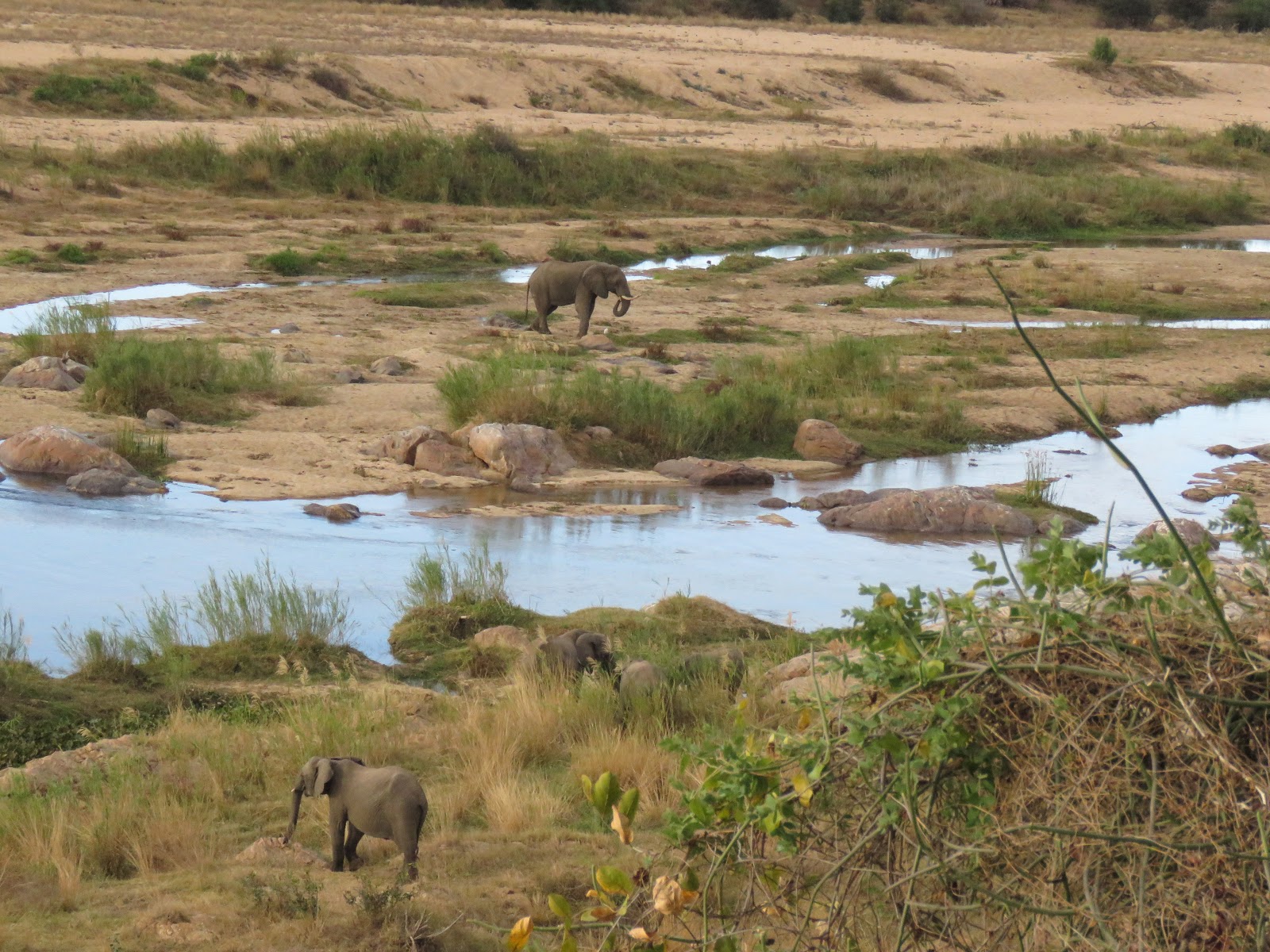 |
| This photo better represents what I’ve been practicing. |
As it is, driving through the entrance booths can take as long as 10 or 15 minutes per vehicle. Once we cross the Crocodile Bridge, we’re anxious to get inside to begin our favorite route.
On another note, we can’t believe we’re leaving for our next visa run in a little over three weeks. Where did the time go? These 90 day periods we’re allowed to stay in South Africa are flying by so quickly. It’s undoubtedly frustrating we have to leave, but it’s the only solution we see available at this time.
Speaking of visas, a few minutes ago, we were talking on Skype with friends Lea Ann and Chuck, whom we met while on a cruise, Royal Caribbean Explorer of the Sea, from Sydney to Seattle. We’ve stayed in touch over these past many months. They had visa-related and other questions to ask.
 |
| I’m not a “natural” photographer making it extremely difficult to learn all the nuances, but I’m determined to improve over time. |
Soon, Lea Ann and Chuck will embark on their own world travel journey, and of course, they encountered some concerns about visas for specific situations. We suggested they contact one of the many visa processing companies for finite details.
But, we were able to give them an overview of a few situations we’ve encountered along the way, including our experience in being “illegal aliens” in Australia last year due to a closed-loop cruise.
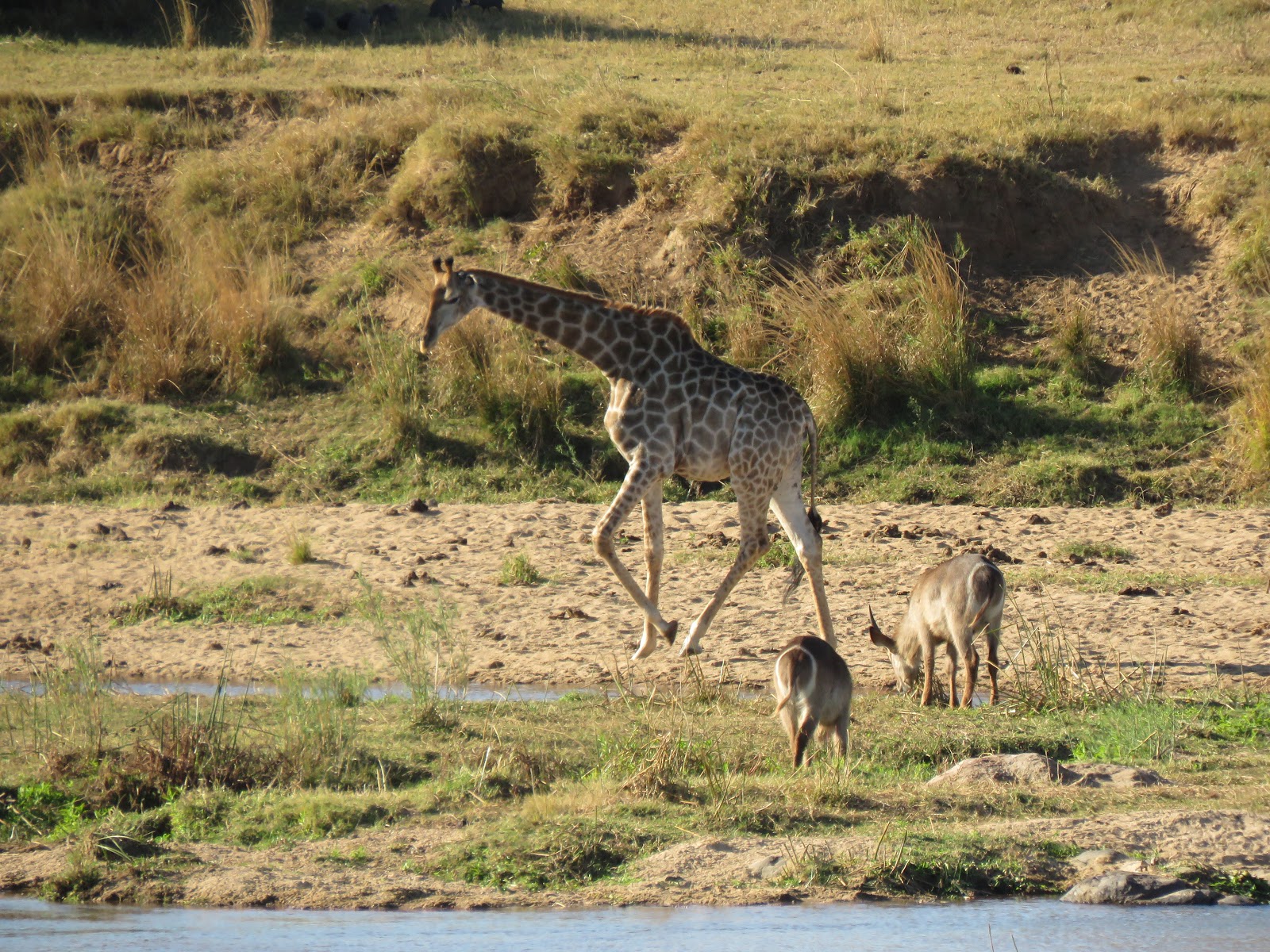 |
| A giraffe near two waterbucks. |
For one of many posts describing our illegal alien status in Australia, please click here. Luckily, after considerable time and effort, we were able to work it all out and leave on the cruise where we met Lea Ann and Chuck on our way back to the US to see family.
In speaking with Lea Ann and Chuck, we’re reminded of how vast our experiences have been since 2012 and how grateful we are for every experience, good and bad. We’ve learned a lot from our mistakes and, on occasion, prided ourselves on good decisions we’ve made along the way.
 |
| We always enjoy watching elephants crossing a river or a road. |
However, continuing to travel the world, which we’ll commence with even more mobility beginning next February, is always a “work in progress.” The learning, along with our personal growth as individuals and a couple, is an ongoing process.
Today, as we drove through Kruger for several hours, we relived many of the details of the early stages of our relationship. At that time, we were the most “unlikely” couple to succeed as anyone we’d ever known. Our differences were many.
 |
| The green grasses along the river are pleasing to the elephants. |
And yet, here we are 27 years later, and we’ve decided we couldn’t have been better matched in general and for this extraordinary life we live. The likelihood of two people willing to live this life and doing so with love, respect, peace, and harmony is hard to envision.
 |
| A lone elephant across the river. |
We wish Lea Ann and Chuck, another happy couple, the very best life together as they continue to plan their world travel adventures. We have no doubt they’ll be as content and fulfilled as we have been!
Happy day and evening to all!
Photo from one year ago today, July 24, 2017:
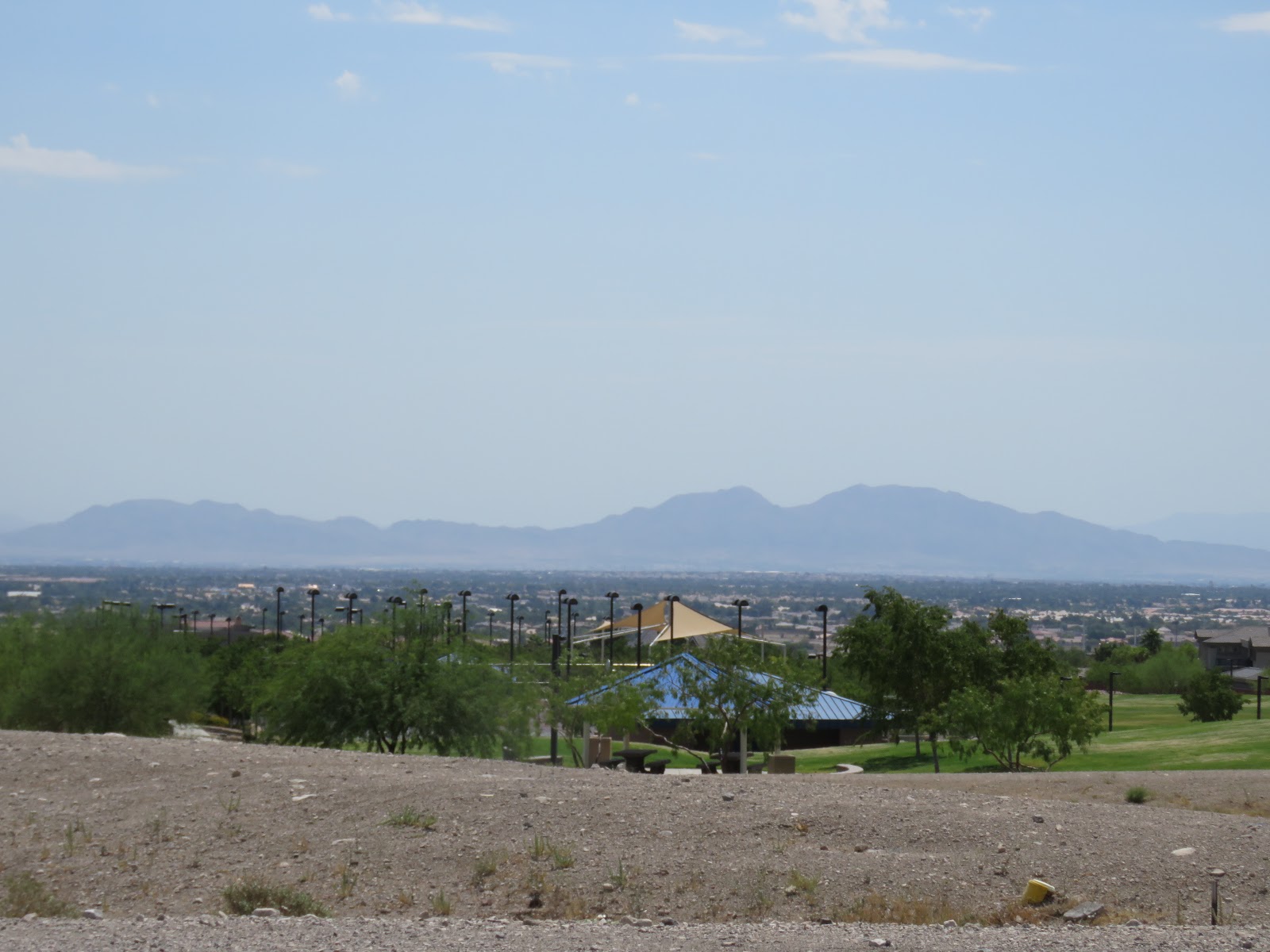 |
| The heat and dust create a haze over the desert, often impeding views of the mountains. For more photos, please click here. |






























